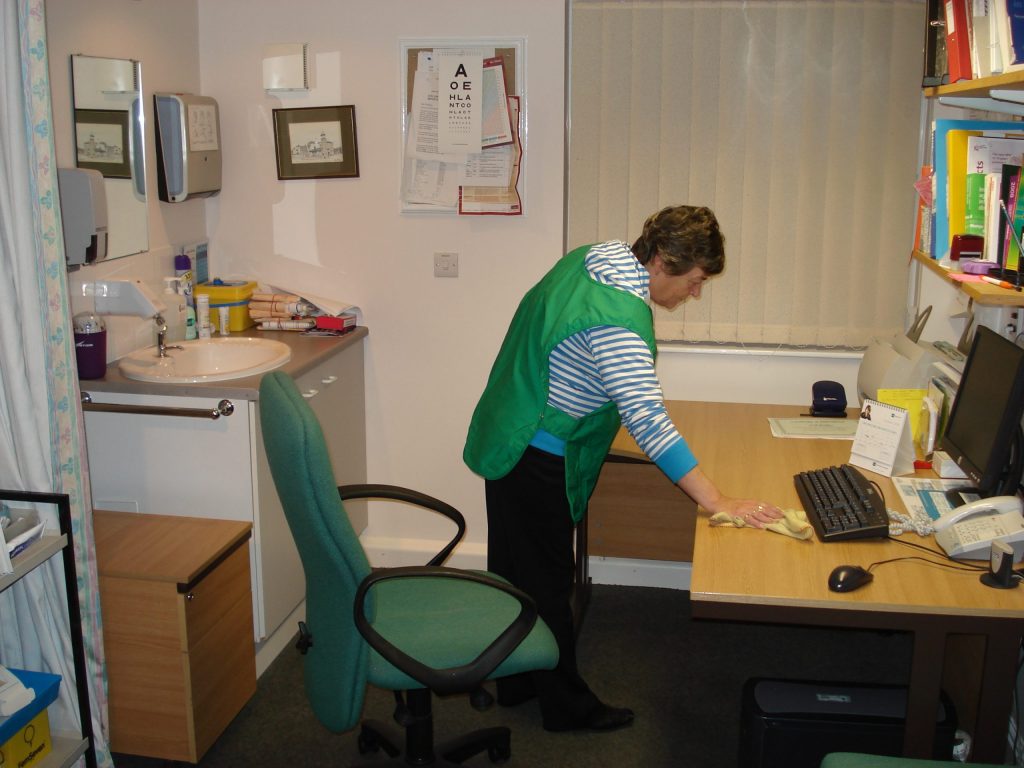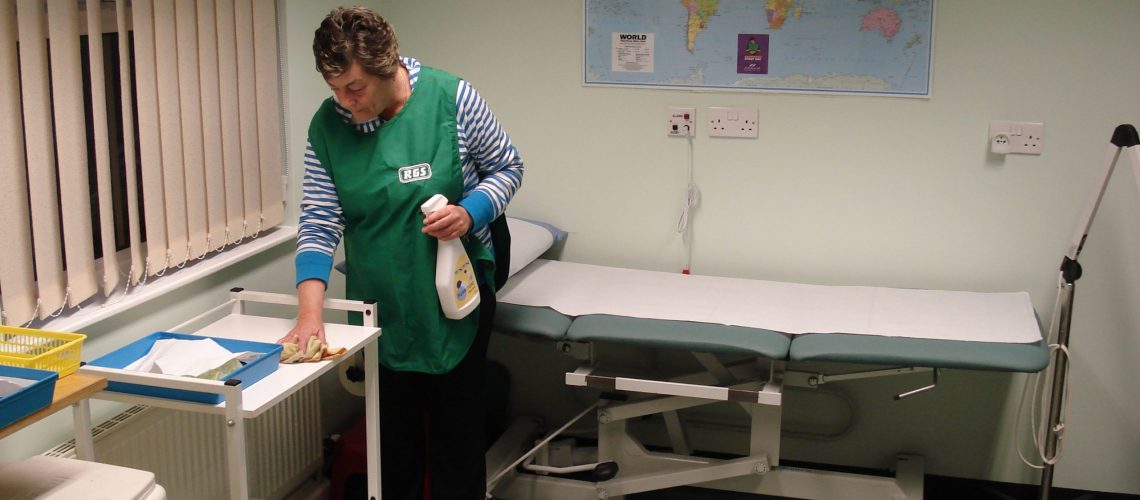In healthcare, cleaning goes far beyond surface-level tidiness—it’s a critical line of defence against infection. Medical cleaning ensures hospitals, clinics, and other care settings are safe for patients, staff, and visitors. Unlike everyday cleaning, it involves strict protocols, specialised products, and rigorous training to eliminate harmful microorganisms and reduce the risk of healthcare-associated infections (HAIs). From high-touch surfaces to complex equipment, medical cleaning is a vital part of maintaining both safety and trust in healthcare environments.
Understanding Medical Cleaning
Medical cleaning is a specialist practice focused on infection control and hygiene in clinical settings. It’s guided by clear protocols designed to stop the spread of pathogens and protect vulnerable individuals. This type of cleaning is about more than appearances—it plays a key role in ensuring safety, meeting legal standards, and supporting the overall operation of healthcare services.
Difference Between Medical and Commercial Cleaning
While commercial cleaning prioritises general hygiene in workplaces or public spaces, medical cleaning demands a much higher standard. It involves hospital-grade disinfectants, trained staff, and specific procedures like terminal cleaning after patient discharge. Everything is documented and regularly inspected to meet strict healthcare regulations, which is rarely the case in typical commercial settings.
Common Environments Requiring Medical Cleaning
Medical cleaning takes place in a wide range of environments—from hospitals and GP surgeries to dental clinics and outpatient centres. Each setting carries different risks and cleaning needs. For instance, operating theatres require near-sterile conditions, while waiting areas call for frequent disinfection of high-touch surfaces. Cleaning methods and products are tailored to the setting and its infection risk level.

Key Procedures and Standards
Cleaning in medical settings involves daily maintenance, targeted cleaning after patient discharge, and deep cleans during outbreaks or at regular intervals. Each process has specific steps, timelines, and techniques to ensure thorough disinfection. Terminal cleaning, for example, covers all surfaces in a vacated room to eliminate lingering pathogens. In some cases, advanced tools like UV sanitisers or electrostatic sprayers are used to reach difficult areas.
Cleaning Agents and Disinfectants Used
Disinfectants used in medical cleaning must be strong enough to eliminate a wide range of pathogens. These include chlorine-based products, alcohol solutions, and quaternary ammonium compounds, all of which must be used correctly to be effective. A key factor is “dwell time”—how long a surface remains wet with disinfectant—which directly impacts how well it works.
Regulatory Guidelines and Compliance
In the UK, healthcare cleaning is governed by regulations from the NHS, CQC, HSE, and Public Health England. These bodies provide detailed guidance on cleaning standards, chemical usage, and documentation. Regular audits ensure compliance, and failure to meet requirements can result in serious consequences, including financial penalties and damage to reputation. That’s why consistency, proper training, and accountability are essential.
Roles and Training of Medical Cleaning Staff
Medical cleaning isn’t just about the right tools—it’s about having the right people, properly trained and equipped to carry out essential hygiene work in complex, high-pressure environments. These cleaners are often unsung heroes in healthcare settings, playing a crucial role in keeping facilities safe and compliant. Their responsibilities go far beyond routine dusting and wiping; they must understand infection control principles, know how to handle biohazards, and be trained in the correct use of personal protective equipment (PPE).
Specialised Training Requirements
Medical cleaning staff receive specific training that covers a range of critical skills, including how to clean isolation rooms, deal with clinical waste, and correctly use disinfectants. They are taught to follow detailed procedures, often colour-coded or zone-based, to prevent cross-contamination. Regular refresher courses are also essential to stay up to date with evolving standards and protocols, especially as new pathogens emerge and guidelines are updated.
Responsibilities and Challenges
These staff are responsible for cleaning patient areas, treatment rooms, public spaces, and even high-risk zones like operating theatres. Alongside cleaning, they must report maintenance issues, document completed tasks, and sometimes coordinate with clinical teams. The role is demanding—both physically and emotionally. Exposure to potentially infectious materials, time pressures, and working in sensitive environments all contribute to the challenges they face daily. Despite this, their work remains foundational to healthcare safety.
The Impact of Effective Medical Cleaning
When medical cleaning is done right, the results are visible in both clinical outcomes and public perception. Clean, well-maintained environments reduce infection rates, improve patient experience, and support the broader healthcare team in delivering safe, effective care. It’s one of the most cost-effective ways to enhance patient safety and system performance.
Patient Safety and Infection Control
A clean environment significantly lowers the risk of HAIs, which are a major concern in healthcare. These infections not only prolong hospital stays but can also lead to serious complications or even fatalities. Effective cleaning breaks the chain of transmission by removing pathogens from surfaces and equipment, which is particularly vital in high-dependency units and surgical areas. Studies consistently show that rigorous cleaning routines contribute to measurable reductions in infection rates.
Trust, Reputation, and Operational Efficiency
Patients and their families notice when a facility is clean and orderly—it shapes their overall impression of the care they receive. Cleanliness is closely linked to trust and professionalism in healthcare. Moreover, from an operational point of view, fewer infections mean fewer readmissions and complications, which in turn reduce costs and ease pressure on healthcare systems. Medical cleaning, therefore, plays a quiet but powerful role in making healthcare delivery more efficient and more effective.
Medical cleaning is far more than a background task—it is a critical, professional discipline that safeguards the health of patients, staff, and the wider community. From high-level disinfection procedures to the specialised training of cleaning personnel, every aspect of medical cleaning is guided by precision, regulation, and accountability. Its impact stretches beyond hygiene, influencing patient outcomes, public trust, and the overall efficiency of healthcare systems. As healthcare environments continue to evolve, the role of medical cleaning will only grow in importance, ensuring that safety, quality, and care remain at the heart of every clinical setting.






